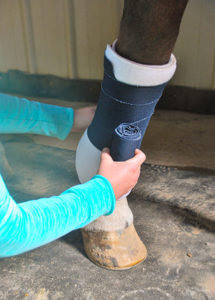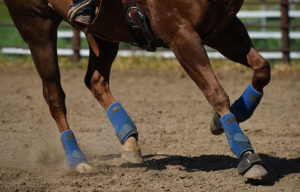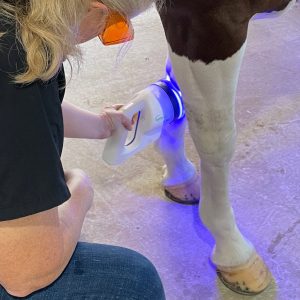Pelvic Fractures in Horses: Not Always Career-Ending
As equine veterinarians’ diagnostic and surgical abilities have advanced, they’ve devised ways to fix many types of fractures previously considered career- or life-ending for horses. One type of fracture that still poses a surgical challenge, however, is that involving the pelvis.
Sarah Peters, VMD, intern at the University of Pennsylvania School of Veterinary Medicine’s New Bolton Center, recently studied the short- and long-term outcomes of pelvic fractures in Thoroughbreds. She determined that many of these horses can recover and race, and she presented her results at the 2014 American Association of Equine Practitioners Convention, held Dec. 6-10 in Salt Lake City, Utah.
Peters said 0.5-4.4% of all lamenesses occur in the pelvic limbs, and 28% of those are fractures. "These cases are out there, and you’re going to see them eventually," she said. They’ve also recently become easier to diagnose thanks to improved imaging technology.
In her study of pelvic fracture outcome and epidemiology, Peters reviewed the records of 136 Thoroughbreds diagnosed with pelvic fractures (confirmed via imaging or necropsy) at Rood & Riddle Equine Hospital, in Lexington, Kentucky, from 2000 to 2010. She looked at each horse’s race record or offspring race record (if the horse was retired to breed) and considered discharge from the clinic to be a successful short-term outcome and return to racing or breeding to be a successful long-term outcome
Create a free account with TheHorse.com to view this content.
TheHorse.com is home to thousands of free articles about horse health care. In order to access some of our exclusive free content, you must be signed into TheHorse.com.
Start your free account today!
Already have an account?
and continue reading.

Written by:
Alexandra Beckstett
Related Articles
Stay on top of the most recent Horse Health news with












